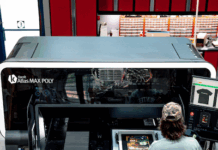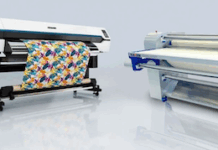Mutlu Yildirim, founder and CEO of Airsqreen, and writing for Digital Signage Today, says truly understanding the similarities and differences will inform DOOH best practices that will lead to positive change and growth.
Key similarities
Driving sales
Personalised advertising on online advertising channels is potent in terms of driving sales. When you know users’ interest areas, it is possible to show relevant ads, and the potential to sell a product increases.
Out-of-home advertising is mainly known to create awareness, but I can tell you from first-hand experience that it also drives sales. For example, we launched a 100% digital billboard campaign with an auto dealership: no digital, no TV, no radio, nothing. They sold 100 cars in six days, a significant increase over what they normally sell over a similar time period. There was a smart, dynamic creative, but no other bells and whistles. The success of this campaign made clear to me that DOOH advertising can also be a powerful medium to drive direct, bottom-of-the-funnel sales.
Transparency
Measurement and ad verification are essential concepts in online advertising. They increase the confidence and trust of the marketing clients because they have independent confirmation of delivery. One reason that online advertising budgets have been growing is that digital media buyers can measure and verify everything in real-time.
We now have new independent technology companies to measure and verify ads in the DOOH space in a true unbiased fashion, which was a big missing piece in this space. Over time, the hope is that this independent verification leads to more confidence in the ad medium, and higher budgets will follow.
Automation
One of the most significant advantages of online advertising is ad platforms that automate almost all workflows. For example, buyers can manage their campaigns via their dashboards and get real-time reports. In addition, they can monitor and track the progress of their campaigns, mostly in real-time.
Until recently, there has been no ad platform technology to manage campaigns efficiently for DOOH advertising. But now, new technologies have been developed that are helping buyers track their campaigns through real-time dashboards, automate many manual tasks, and fix any potential issues that may arise quickly.
Key differences
One-to-one vs. one-to-many
Let’s start with an easy one. When you use your laptop or mobile phone, you’re most likely in front of that device, looking at it and interacting with it. There may be other people around you, but most likely, you’re the only one who sees any ads appearing on your device. So, online advertising is a one-to-one communication channel. One ad means one impression.
On the other hand, a DOOH screen is often in a large public area; on the street, at the shopping mall, at the airport, etc. So, when an ad appears on that screen, you and potentially many others around you will see the same ad. That means DOOH advertising is a one-to-many communication channel. One ad means multiple impressions.
Data quality
When interacting with your mobile phone, your profile data is available to the advertisers in real-time. That’s why you can see relevant ads. Yes, many factors impact data quality in online advertising, but at least it’s possible to target a person with some real-time data.
On DOOH ads, however, there is rarely real-time audience data available. Instead, most of the data points come from either data aggregators or screen operators – with sizeable lag time. In DOOH, data is handled differently, with varying levels of accuracy, and is mostly not real-time.
Personalised advertising
Since digital ads appear on a person’s device, it’s relatively easy to track and target a person with a relevant ad. So, ‘personalised advertising’ is possible for now, but this may become more of a challenge with more stringent tracking limitations and consumer privacy mandates.
As discussed before, DOOH ads are a one-to-many medium and are tracked mostly with delayed data points. It’s not easy to track and target a person with a DOOH ad campaign. And, I’d argue that it’s not easy to target an audience either.
Having experience in both the digital and DOOH advertising industries, I can easily say that DOOH creative has an inherent beauty that has the potential to truly captivate passers-by.
Let’s be honest, no one visits NYTimes.com to see the banner ads, but many people visit Times Square to see those beautiful billboards. Digital ads stand between me and the content I am searching for, while DOOH ads are the content. And that’s a beautiful thing.
As we move this industry forward, let’s remember that this is not a ‘copy and paste’ of best practices from online media. The similarities and differences between the two mediums can help inform adoption of some practices from online media but should also aid in the creation of new ideas and concepts that uniquely benefit DOOH.
This article appears in Digital Signage Today.















